The Majestic, 115 Central Park West: Review and Ratings
between West 71st Street & West 72nd Street View Full Building Profile
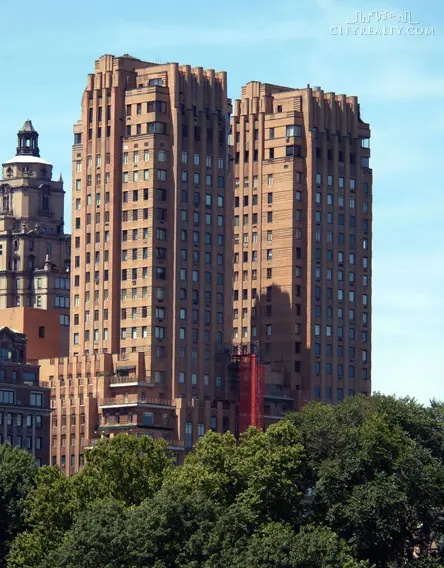

One of Central Park West's famous twin-towered apartment houses, the 29-story Majestic occupies the former site of the 12-story, 600-room Hotel Majestic that had been built in 1894 by Albert Zucker with a roof garden and bowling alleys.
Irwin Chanin of the Chanin Construction Company that in 1929 completed the now famous 56-story Chanin Building on the southwest corner of Lexington Avenue and 42nd Street had grander plans for the site.
A few months before the 1929 stock market crash he had announced plans for a 45-story apartment hotel with a central dining room and a ballroom for the site at 115 Central Park West.
The handsome old hotel was demolished and steelwork for the new tower commenced, only to be interrupted by the crash, which forced Chanin to scale back his plans. At the same time, the city had based a new multiple-dwelling law and Chanin's single tower became two to take advantage of the law.
Many of the 238 original apartments had fireplaces, and black walnut floors in the living rooms and large foyers.
The building was completed in 1931 and converted to a cooperative in 1958.
Bottom Line
Across the street from the Dakota and from Strawberry Fields in Central Park, this very impressive, twin-towered, Art Deco-style apartment building is one of the major landmarks on the Upper West Side. Its apartments have great views and fireplaces.
Description
The light-brown masonry building now has about 220 apartments.
Many of the apartments in the base of the building have corner windows.
The building has a few terraces that project slightly from the façades and serve as strong accent marks to the overall composition.
The façades are highly patterned with piers rising in the central sections and tightly ribbed masonry rusticated in darker masonry at the sides. The building permits protruding air-conditioners.
The building has a limestone base.
Its tops are glorious Art Deco-style pinnacles with pronounced piers facing Central Park and large vertically curved elements in the back. These curved elements are also ribbed.
It has five elevator banks.
Amenities
The building has a doorman and a concierge and elevator attendants as well as a children’s playroom, a fitness center and a bicycle room.
Apartments
Many apartments have fireplaces and high ceilings and spacious layouts.
Apartment 31E is a one-bedroom unit with an 18-foot-long living room with a 10-foot-long dining alcove with a corner window looking east and south next to an angled 16-foot-long kitchen.
Apartment 32E is a one-bedroom unit with an 11-foot-wide foyer that opens into a 25-foot-long living/dining room next to a 11-foot-long enclosed kitchen.
Apartment 29D is a two-bedroom unit that has a 12-foot-long entry foyer that leads to a 25-foot-long living room and a 16-foot-long enclosed dining room next to a 13-foot-long enclosed kitchen.
Apartment 5D is a two-bedroom unit with a 21-foot-long entrance gallery that leads to a two-step-down, 29-foot-long living room with wood-burning fireplace that is adjacent to a 21-foot-long library. The gallery also leads to a 23-foot-long dining room next to a 17-foot-square kitchen.
Apartment 8C is a three-bedroom unit with a 30-foot-long wide entrance gallery that leads to a 30-foot-long living room with a fireplace that opens onto a 20-foot-long library and a 20-foot-long corner solarium. The apartment has a formal 29-foot-long dining room next to a large kitchen with a dining area.
Apartment 6C is a three-bedroom unit with a 16-foot-long entrance gallery that leads to a 28-foot-long living room and a 23-foot-long dining room that is next to a 19-foot-long kitchen with a 9-foot-long breakfast room.
Apartment G on floors 2 through 15 is a three-bedroom unit with a vestibule that leads to a gallery that leads to a 28-foot-long “drawing” room with a fireplace on one side and a 23-foot-long dining room on the other.
Apartment 9A is a four-bedroom unit that has a 13-foot-long gallery that leads to a 29-foot-long living room with fireplace and a 21-foot-long dining room. The master bedroom has a small terrace and there are two servant’s rooms.
Apartment 19A is a four-bedroom unit that has a 13-foot-long gallery that leads to a 24-foot-long living room adjacent to a 16-foot-long library and a 10-foot-long office. The gallery also leads to a 16-foot-long dining room next to a 23-foot-long kitchen with a breakfast room and there is a terrace that is entered from the office and a small bedroom and extends around the kitchen, dining room and another bedroom. A separate, long terrace adjoins the living room and two bedrooms and faces south.
History
Chanin and his brothers, Henry, Sam and Aaron, had started in the construction business with one-and-two-family houses in Bensonhurst, Brooklyn, but moved into Manhattan with a flourish, building the Lincoln (now the Manhattan) Hotel and numerous theaters including the famed Roxy and the Majestic, the Royale, and the Biltmore, among others.
"Irwin Chanin, through his in-house architectural designer, Jacques Delamarre, and his decorative expert, sculpture Rene Chambellan, decided to be aggressively different. He chose a stripped-down Art Deco version that he called Modern American, but which was often referred to as Zigzag Moderne. Unlike the historical styles, which had a horizontal emphasis and a cornice to "end" the building at the roofline, Moderne was vertically oriented. In subtle counterpoint to the new building's verticality were the horizontal cantilevered terraces and strips of windows at the corners. A technically advanced construction method obviated the need for corner columns in the solaria, thereby increasing their sunny openness," notes Andrew Alpern in his excellent book, "Luxury Apartment Houses of Manhattan: An Illustrated History," Dover Publications Inc., 1992.
The Depression took its toll on the building and Chanin defaulted on its mortgage in 1933.
The building subsequently became a cooperative and has long been one of the premier addresses on Central Park West given its prime location and stupendous views.
According to Alpern, columnist Walter Winchell and Frank Costello, the gangster, lived in the Majestic, and Bruno Richard Hauptmann, the convicted kidnapper of Charles Lindbergh's baby, worked on the building as a carpenter.
The original Chanin plans for the site, on which the architectural firm of Sloan & Robertson also worked, would have produced quite a monumental tower, noted for a complex series of mid-tower setbacks and culminating in a much more pronounced piered top. A rendering of the tower is reproduced on page 410 of "New York 1930 Architecture and Urbanism Between the Two World Wars," by Robert A. M. Stern, Gregory Gilmartin and Thomas Mellins, Rizzoli, 1987. "The flattened pilasters of the design rose up through the base as lines of structural force interlaced by the stacked apartment floors, the horizontality of which was emphasized by continuous bands of glass stretching across the corners (and enclosing narrow solariums within)," the authors wrote.
Lewis Mumford, the famed architecture critic, was not enthusiastic about the design of the Majestic nor its sister Chanin building, the Century, a few blocks to the south on Central Park West, according to the authors. They quote him as saying of the two buildings that their "modernism is merely a thin veneer: banked corner windows that light long, narrow rooms; occasional terraces fitfully disposed about the upper parts of the structure; massive brick enclosures of water tanks. Even the relatively plain façades do not authenticate these structures. But these apartments are far from being solid and useful examples of modern architecture."
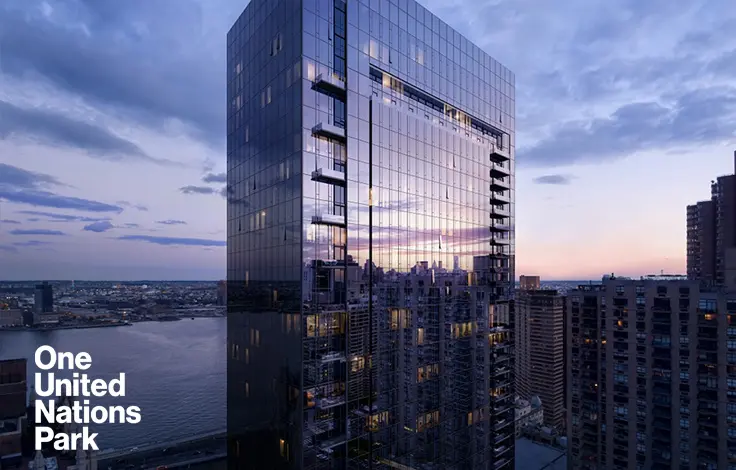
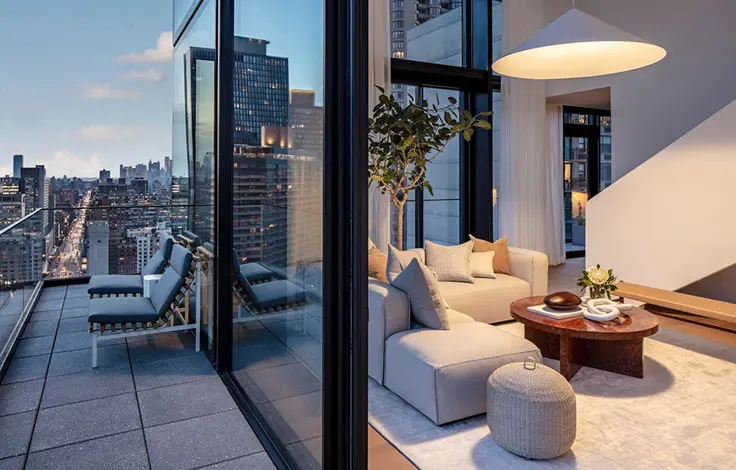
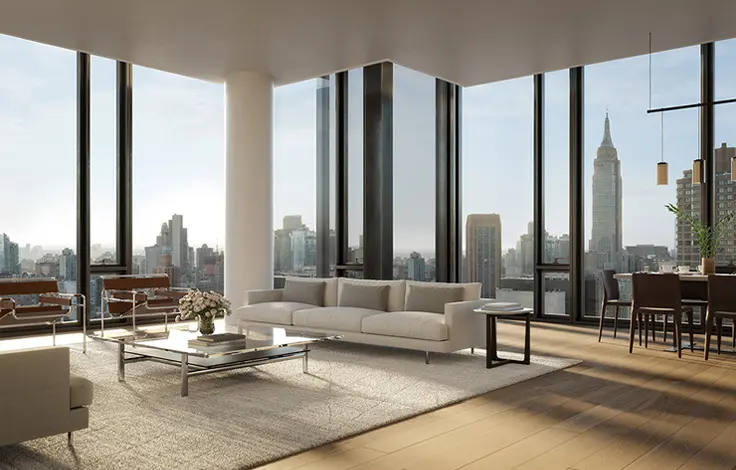
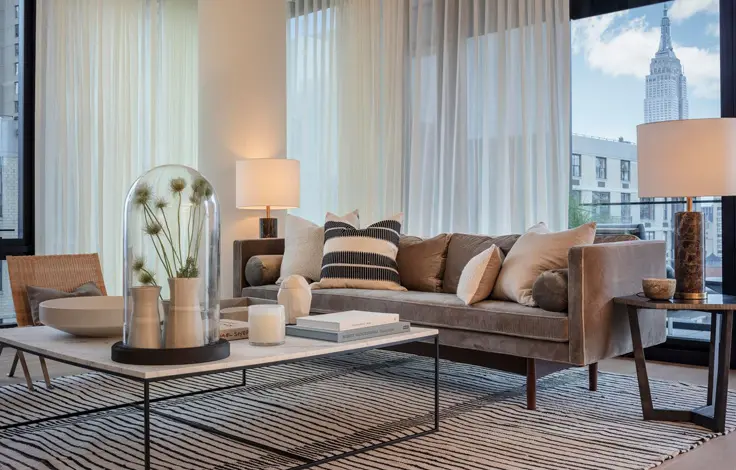
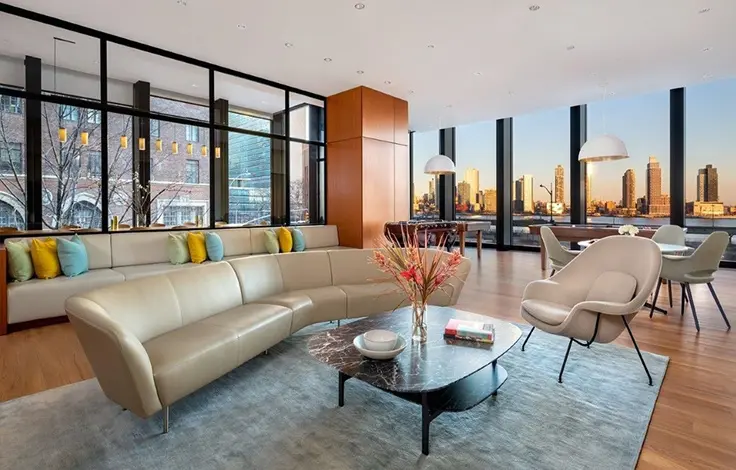
 6sqft delivers the latest on real estate, architecture, and design, straight from New York City.
6sqft delivers the latest on real estate, architecture, and design, straight from New York City.
